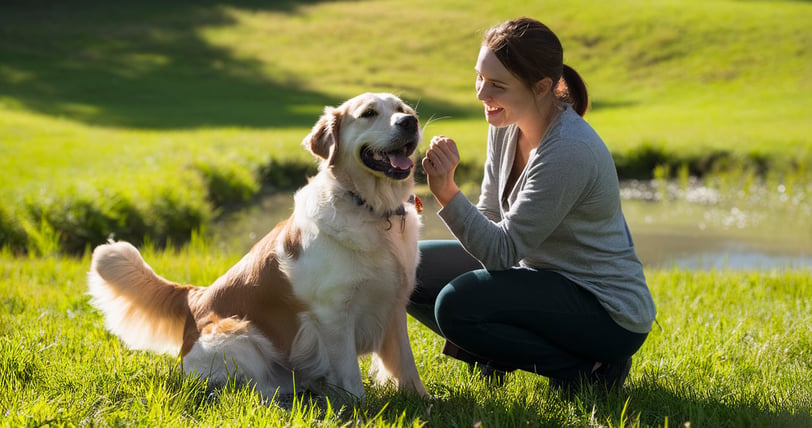The Ultimate Guide to Choosing the Best Dog Whistle: Enhancing Your Training Experience
Discover the ultimate guide to choosing the best dog whistle for training and recall. Explore key features, top product recommendations, effective training techniques, and common mistakes to avoid. Enhance your dog’s communication and strengthen your bond with expert tips and resources for successful dog training. Perfect for all dog owners!
The Canine Chronicles
8/19/20246 min read


In the world of dog training, finding the right tools can make all the difference. One such tool that has stood the test of time is the dog whistle.
Whether you're a professional trainer, an avid hunter, or simply a pet owner looking to improve your dog's recall, a high-quality dog whistle can be a game-changer.
In this comprehensive guide, we'll explore everything you need to know about selecting and using the best dog whistle for your needs.
The Ultimate Guide to Choosing the Best Dog Whistle: Enhancing Your Training Experience
In the world of dog training, finding the right tools can make all the difference. One such tool that has stood the test of time is the dog whistle. Whether you're a professional trainer, an avid hunter, or simply a pet owner looking to improve your dog's recall, a high-quality dog whistle can be a game-changer. In this comprehensive guide, we'll explore everything you need to know about selecting and using the best dog whistle for your needs.
Why Use a Dog Whistle?
Before diving into the specifics of choosing a dog whistle, it's important to understand why these tools are so valuable in dog training. Dog whistles offer several distinct advantages over traditional voice commands:
Consistency in sound: Unlike human voices, which can vary in tone and pitch depending on emotions or environmental factors, a dog whistle produces the same sound every time. This consistency helps dogs learn and respond more reliably to commands.
Long-range effectiveness: Dog whistles can be heard over much greater distances than the human voice, making them ideal for outdoor training, hunting, or recall in large open spaces.
Lack of emotional tone: Dogs are highly attuned to human emotions, which can sometimes interfere with training. A whistle removes this emotional component, allowing for clearer communication.
Ability to cut through background noise: In noisy environments, a dog whistle's distinct sound can be more easily heard and recognized by your dog than verbal commands.
Reduced vocal strain: For trainers or owners who work with multiple dogs throughout the day, using a whistle can help preserve your voice.
These benefits make dog whistles an excellent tool for various training scenarios, from basic obedience to advanced fieldwork.


Key Features to Consider When Choosing the Best Dog Whistle
When shopping for a dog whistle, keep these important factors in mind:
Frequency range:
Adjustable whistles allow you to find the perfect pitch for your dog's hearing sensitivity.
Some dogs respond better to higher frequencies, while others prefer lower tones.
Look for whistles with a range between 5,400 to 12,800 Hz.
Material and durability:
Metal whistles (like brass or stainless steel) are typically more durable and produce a consistent sound.
High-quality plastic whistles can be a good, lightweight alternative.
Consider the environment in which you'll be using the whistle (e.g., water-resistant options for outdoor use).
Design and ease of use:
Ergonomic designs make the whistle comfortable to hold and use for extended periods.
Pea vs. pealess whistles: Pea whistles offer more tonal variety but can freeze in cold weather.
Additional features:
Lanyards or keyrings for easy carrying and quick access.
Adjustable frequency locks to maintain your preferred pitch.
Silent or ultrasonic options for urban environments.
Top Dog Whistles on the Market
Here are some of the best dog whistles available, catering to different needs and preferences:
Acme 535 Silent Dog Whistle
Adjustable frequency (5,400 to 12,800 Hz)
Durable metal construction
Ideal for professional trainers and serious enthusiasts
SportDOG Roy Gonia Competition Whistle
Loud, clear sound for long-distance use
Perfect for hunting and field training
Pealess design works well in all weather conditions
Ortz Dog Whistle
Affordable option for beginners
Comes with a lanyard for convenience
Adjustable frequency to suit different dogs
Acme 210.5 Gundog Whistle
Specifically designed for working gundogs
Consistent, high-pitched tone
Durable plastic construction
Ultrasonic Dog Whistle by Modus
Silent to human ears
Adjustable frequency
Ideal for urban environments or sensitive neighbors
For further reading visit out page teach your dog the lay command


How to Use a Dog Whistle Effectively
Once you've chosen the best dog whistle for your needs, it's crucial to use it correctly for optimal results. Here's a step-by-step guide to get you started:
Introduce the whistle gradually:
Begin by associating the whistle sound with positive experiences, like treats or playtime.
Blow the whistle softly at first to avoid startling your dog.
Start with basic recall training:
In a quiet, enclosed area, blow the whistle and immediately reward your dog when they come to you.
Repeat this process several times a day for a few minutes each session.
Increase distance and distractions:
Once your dog responds consistently in a controlled environment, gradually increase the distance between you.
Introduce mild distractions and continue practicing the recall.
Use consistent whistle patterns:
Develop specific whistle patterns for different commands (e.g., one long blast for "come," two short blasts for "sit").
Be consistent with these patterns to avoid confusing your dog.
Pair the whistle with verbal commands and hand signals:
This multi-sensory approach can reinforce the training and provide backup communication methods.
Practice regularly:
Incorporate whistle training into your daily routine to maintain and improve your dog's response.
For more in-depth training techniques and tips, check out our comprehensive dog training guide.
Common Mistakes to Avoid
When using a dog whistle, be aware of these potential pitfalls:
Overuse: Don't blow the whistle unnecessarily, as this can desensitize your dog to the sound.
Inconsistency: Stick to your established whistle patterns and training routines.
Negative associations: Never use the whistle to call your dog for punishment or unpleasant experiences.
Improper technique: Learn the correct way to blow your specific whistle for the best sound production.
Neglecting maintenance: Clean your whistle regularly and check for any damage that might affect its sound.
FAQs About Dog Whistles
Q: Can all dogs hear dog whistles?
A: Most dogs can hear dog whistles, but the effectiveness may vary depending on the individual dog's hearing range and the whistle's frequency. Some older dogs or those with hearing impairments may not respond as well.
Q: Are silent dog whistles really silent?
A: Silent dog whistles produce sounds at frequencies that are typically inaudible to humans but audible to dogs. While they're not completely silent, they're much quieter than traditional whistles.
Q: How long does it take to train a dog with a whistle?
A: Training duration varies depending on the dog's age, temperament, and previous training experience. With consistent practice, most dogs can learn basic whistle commands within a few weeks. However, advanced training may take several months to perfect.
Q: Can I use a dog whistle to stop barking?
A: While some people use dog whistles as a deterrent for barking, it's generally more effective to address the root cause of excessive barking through positive reinforcement training methods.
Q: Is it safe to use a dog whistle near human ears?
A: Most dog whistles are safe for human hearing. However, it's best to avoid blowing the whistle directly next to someone's ear, especially with non-silent whistles.
Conclusion: Choosing the Best Dog Whistle for Your Needs
Selecting the best dog whistle is an important decision that can significantly impact your training success. Consider your specific needs, your dog's temperament, and the features that matter most to you when making your choice. Remember that the whistle is just a tool – consistent training and positive reinforcement are key to achieving the best results.Whether you're looking to improve your dog's recall, enhance your hunting experience, or simply strengthen the bond with your canine companion, a quality dog whistle can be an invaluable asset. Take the time to research and select the right whistle, and commit to a regular training routine for the best outcomes.Ready to elevate your dog training experience? Explore our top-rated dog whistle and find the perfect match for you and your furry friend today!
Additional Resources
For more information on dog training and behavior, check out these reputable sources:
Thanks and best regards
The Canine Chronicles
Click the link below for your free ebook and train your dogs brain.
Click here for brain training.
Remember, every dog is unique, and what works best for one may not be ideal for another. Be patient, stay consistent, and don't hesitate to seek help from a professional trainer if you encounter challenges along the way.This post contains affiliate links. If you make a purchase through these links, we may earn a commission at no additional cost to you. This helps support our site and allows us to continue providing valuable content for dog owners and trainers.
